 Jordan Spieth’s win in the recent US Open at Chambers Bay Golf Course reminded me of the old maxim that “the cream always rises to the top,” which seemed fitting given that a significant percentage of the world’s top ranked golfers played particularly well during US Open week. It doesn’t seem to matter whether the greens are bumpy, smooth, fast, slow, undulating or relatively flat, the best golfers will find a way to play the difficult golf courses just a little bit better than the rest. What is the Difference That Makes the Difference? Like many before me I’ve wondered why these exceptional golfers seem to play better--especially in major championships, and I’ve looked closely at this over a long period of time trying to understand what the difference is that makes the difference. Why is it that they just seem to play a little bit better when it matters? Maybe it’s their techniques? I think we can all agree that it’s not their techniques, because at this level they can all hit it and putt it exceptionally well, and let's face it, every golf swing on the tour is different both in terms of style and function. Maybe it’s experience? Nope, that won’t hold much water when you consider that young golfers like Jordan Spieth and many before him started winning pretty quickly, which is interesting because many other professional golfers who have played for years never win anything of significance.  Maybe their stats are better? Yes, it’s a given that if you trawl their stats there’s no doubt that you will probably find one or more departments where these golfers are just a fraction better than everyone else over a season. And I mean a fraction better, so small in-fact that it may not be the real difference that makes the difference. Maybe they are fitter golfers? Yes, again it definitely helps to be fit for golf—especially at tour level when you compete over 4 days. But there are many in history who were not that fit who still performed at an exceptional levels. So let’s face it, we could go on and on and discuss (and even debate) the reasons until the end of days, and the above factors and plenty of others will have some impact on why these golfers play so well in the big tournaments. But when all is said and done, the fundamental difference that makes the difference is quite simply that they produce a slightly lower score average over 4 days of tournament play. Nothing too startling about that I know, it’s just the simple truth of it. But Why Do Great Golfers Score Lower in Big Tournaments? It doesn’t matter which successful golfer you look at over the past 100 years from Bobby Jones to Jack Nicklaus, or Lady Heathcote Armoury to Karrie Webb, the one common denominator is that every one of these great golfers rose to the top of golf because of a lower score average in big tournaments. They found their way to lower golf scores in big tournaments when it matters, and so can you. Take a look at the world rankings for the week of the US Open (Below) and compare the players World ranking (Left Column) to their finish at the US Open. Notice how many of the top 20 ranked golfers also finished inside the top 20 of the US Open field. Also you will notice that 7 of these golfers in the top 20 have previously won major championships. These great players were able to gear their game to the particular challenges of the Chambers Bay layout and finish high up the leader-board. So the million dollar question is what is the difference that makes the difference with these golfers? Yes we know they have lower scores in big tournaments but how? What can you learn from the way they play that will help you to play better in the big events you play in?  Great Golfers are ADAPT-ABLE Golfers Great Golfers are ADAPT-ABLE Golfers Adapt-Ability the Key to Success in Big Tournaments The one common denominator that these great golfers all possess is a strong self-belief in their ability to contend consistently against the best in the world on any style of golf course, in any type of conditions, anywhere. These great golfers have developed their Adapt-Ability, the ability to manage them-self and their game in the crucible of competition on any golf course, and they do it with the help of the following;
Gear Your Game to Worst Case Scenarios NOT Best Case Great golfers know that golf is predictably unpredictable, that-is it requires the ability to make continual adjustments in your attitude and your skills because the conditions change all the time. The golfer with the most flexible attitude, with a golf bag full of skills, and a game that is completely adapt-able will be at their best when it matters most. Golf preparation comes in many forms but great golfers get the basics right every time.
Great golfers build their game around the worst case scenario, NOT the best case. This means that there are no surprises in store for them when they play, that their meticulous preparation helps them to be in great mental, physical, strategic and technical shape going into major tournaments. The lesson you can learn from watching great golfers like Jordan Spieth is that they know that the real secret to playing your best golf on tough layouts starts with working on yourself and the insecurities that get in the way of you "just playing golf." These golfers play a little better than the rest of the field in the big tournaments because they develop Adapt-Able Skills into their game to give them the best opportunity possible to play their best in every type of situation imaginable. 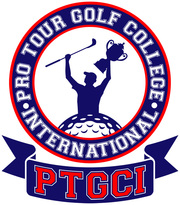 Perth and Jakarta Perth and Jakarta So take a good and hard look at your game right now and ask yourself this question. If I had played Chambers Bay the week of the US Open and I knew that the course was going to be the way it was for the event 6 months before I played it, what mental, physical, strategic and technical skills would I need to work on and improve to make me more Adapt-Able and competitive going into the event? Lawrie Montague and David Milne - Pro Tour Golf College The Professional Golf Tour Training College The Importance of the Romance Stage of Learning by Michael Hebron PGA Master Professional12/6/2015
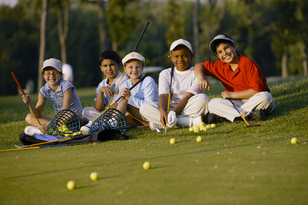 Benjamin Bloom called The Stages of Learning early, middle, and late and these stages parallel what Alfred North Whitehead in 1929 referred to as the “Romance Stage,” the “Precision Stage,” and the “General Stage.” Studies about human learning and development point out that what happens during the early or romance stages of learning "influences " how long and how often individuals will stay involved with an activity. (Read that insight again) The early romance stage must be recognized for what it is.
Studies show that without interest and passion there will be no love for playing a game or learning a subject. Without interest and love, the basic needs of human behavior and development are not being met." "The brain only learns what it pays attention to" - Professor Terry Doyle...Should it pay attention to what to do, or what to fix? 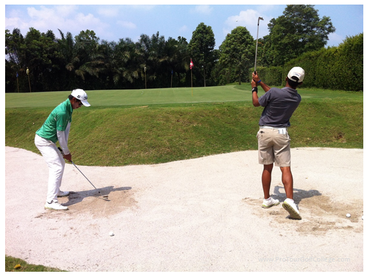 Golf Skill is a Bi-Product Skill-development is a by-product of free, self-motivated play. Pick-up games in parks and school yards, sports environments, and classrooms free of judgment and criticisms are all self-motivated play. This environment should exist in any other learning environment. NOTE: When the early or romance stage of learning is filled with required structured training, lots of instruction and competition, the freedom and enjoyment that can foster interest and passion for an activity are being suppressed. Over-managed, required, and structured instruction during the early / romance stage of learning can cause individuals, young and old, to become frustrated and intimidated, thereby missing an opportunity to develop interest and passion for a subject and love of a game, the love of a subject, or the process of learning anything can be suppressed. I have learned that it is important to recognize that without the sense of pure enjoyment during the early stages of learning, there will be a lack of persistent long term interest. Without enjoyment and self-confidence during free play, there will be little opportunity to gain a feeling of self-worth and love of a game or subject during a journey of development.  Reduce Structure and Increase Play The nature of learning will find a place for a little structured training during the early or romance stage, as long as there is the opportunity to experience "much more free play" filled with personal exploration. Suggestion: When learning, playing for its own sake, students can develop a passion for and fall in love with that game or school subject, regardless of the score or subject to be learned. Studies show that people engage in playful experiences all the time, without anyone telling them to do so. All humans choose to be playful; it is our nature! When it comes to sports and subjects people of all ages stop playing, or play less frequently because:
It seems imperative that before individuals fall in love with and become frequent participants in learning anything, they must experience an introduction stage that Whitehead referred to as the Romance Stage. Learning becomes more difficult than it should be when information is delivered as a “subject- matter experience “and not as a playful “talent-management, developmental process.”  Michael Hebron PGA Master Professional Michael Hebron PGA Master Professional Decades ago Michael Hebron played a key role in orchestrating the first PGA Teaching and Coaching Seminar, bringing together instructors from across the country to share ideas on teaching methods. Following that event, Michael gained the nickname of "the teacher's teacher". Highly respected throughout the international golf community, Michael consults on golf instruction to PGA Switzerland, Italy, France, Finland, Canada, Japan and Sweden. He has given instruction clinics at 30 PGA of America sections. Through his dedication Michael earned the honored status of becoming the 24th PGA of America Master Professional. His book, See and Feel the Inside Move the Outside, was the first golf instruction book accepted as a PGA Master’s thesis. Since then, he has written hundreds of articles for leading golf magazines and authored 4 other books and 3 DVDs. Michael has appeared on The Charley Rose Show, Today Show, The Golf Channel and numerous local cable shows. Golf Magazine and Golf Digest have consistently named Hebron as a member (since their first listings) of America’s Top 50 Instructors. Over the years, Hebron has worked with many successful golfers from the PGA and LPGA tours and several national champions in America and abroad including three time men's major winners. He has also worked with many successful high school and college golfers—but Michael’s pride is working with club golfers. You can contact Michael through his website at http://www.michaelhebron.com/ or through his Facebook page at https://www.facebook.com/neurolearninggolf.live Are Western Golf Instruction Methods Hurting Your Game? If So, We Have a Unique Solution For You9/6/2015
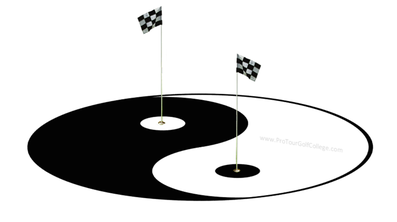 In over 40 years of playing, coaching and generally being around golf there’s one thing David and I are becoming quite concerned about. Golf is becoming a more complicated and difficult game to learn and play. The vast bulk of elite amateur golfers and professional golfers we talk to at Pro Tour Golf College are struggling to learn and make progress playing this great game to even a satisfactory level. It doesn’t seem to matter how much money they have spent on equipment, or whether they've taken lessons from a top 100 teacher or celebrity instructor, the alarming fact is that many of these serious amateur golfers simply aren’t improving their game anywhere near the level they want. So what do we think the main reason for this is? For the most part we believe it's how they are attempting to learn to improve at golf; actually to be more accurate, it’s how they are learning what NOT TO learn in golf. That’s right, nearly all these golfers are learning how NOT TO have lower scores; or how NOT TO enjoy the game even more; or how NOT TO keep making steady progress; or how NOT TO make it more simpler rather than complex, and I could go on, but I think you get the idea. Yes most of these fine golfers we've observed seem to be great at learning how NOT TO get what they want from golf. So do these golfers have a learning problem? Nope, they are all learning perfectly. 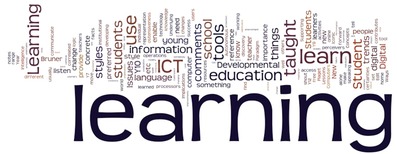 Let’s take a look at the definition of learning from Wikipedia and move forward from there. "Learning is the act of acquiring new, or modifying and reinforcing, existing knowledge, behaviors, skills, values, or preferences and may involve synthesizing different types of information.
Source: http://en.wikipedia.org/wiki/Learning So all these fine golfers are learning as per the definition above, but what we find too often is that they seem to be learning how NOT to get what they want from golf. The simple fact is that you ARE learning; it's just that you are probably learning how to get what you don’t want from golf, most of the time...But don't despair, because there is another way... Maybe it's time for you to try a different way of learning to make the progress you truly want, rather than continuing to follow the Western learning path you are currently on? What You Can Learn from Eastern Martial Arts Training Marital arts teach respect, discipline, hard work, sacrifice and humility. Students are never taught about the concept of failure as in they are in the West, instead they are taught that rather than failing you have simply not learned enough as yet. (Read that again) Eastern learning is seen more as a cyclic development where the pursuit of improvement is a never ending journey along a pathway that has no limits. In contrast Western learning is seen as linear development where improvement has a goal (or multiple goals) and development stops or stalls when a goal is reached. This is an important distinction to understand... 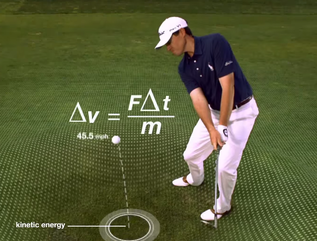 Does science and technology make you better or worse? Does science and technology make you better or worse? Is Science and Technology Making Golf Harder to Play or Easier? Since the arrival of sports scientists onto the golf scene around 25 to 30 years ago, coupled more recently with technology such as Trackman and Flightscope, a lot of younger golf teachers and instructors are being influenced to teach golfers more by numbers and statistics generated from these machines than more traditional ways. This is apparently based around Western scientific ideology that a more accurate, rigorous and scientific approach to teaching golf is the correct way (and some would say the only way) of interpreting the basic movements of a golfers swing. There’s no doubt that some of the data generated from these machines can be helpful, especially if it interpreted in a useful way by golf instructors. But the question that you might need to ask yourself is does this technology make you better? And is this technology really necessary? Does it make it easier for you to learn to play better? Some would definitely say yes, whilst others would beg to differ. Ultimately you need to decide which way you will go.  Sorry But The Western Way of Learning May Not Be the Best Way For You Sadly in the West where these ancient values have been shared and taught successfully for more than 50 years they are now under threat with the arrival of the UFC and MMA, where many fighters are in the martial arts just for personal gain (money, fame, self-promotion, etc.) They’re not so much traditional, philosophically influenced martial artists as they are technicians bent on winning fights. Source: http://www.blackbeltmag.com/category/chinese-martial-arts/ In the West (And it is starting to make its way into the East) we are starting to see a real change in the way golf is being taught where what essentially is a simple game to learn and play, is now becoming a complicated game to learn and play well. The thing to keep in mind is that if you look back over the past 100 years it shows us that many golfers learned how to play golf successfully with much simpler approaches to learning and developing all aspects of their game from the tee to the green.  Respect, discipline, hard work, sacrifice and humility Respect, discipline, hard work, sacrifice and humility At every level in Martial Arts students learn how to learn and acquire basic movement skills through consistent application of the same movements which are practiced until they move from the “how to mind” to the “no mind.” As they move through their grading’s (colored belts in most cases) they are taught humility by losing their ego which is seen as normal and natural. They also learn total acceptance of their outcomes good or bad. They are also encouraged to allow their learning to naturally evolve rather than trying to force it to happen. This is seen as the best way to learn and improve skills. These simple and humble learning values and their Chinese philosophical foundation originate mostly from Chan Buddhism, Taoism, Legalism and Confucianism. Martial Arts has been taught throughout Asia this way successfully for many hundreds of years with literally millions of people learning, and any one following this learning path regardless of the style learned acquires their skills this way. 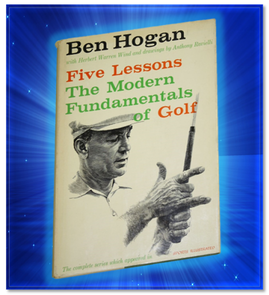 The Best Selling Golf Instruction Book in History The Best Selling Golf Instruction Book in History Is Old Time Golf Instruction Still Relevant? It is no surprise that the most popular golf instruction book today (by a long way) is more than 50 years old. Ben Hogan’s Book “Five Lessons: The Modern Fundamentals of Golf” published in 1957 gives the golfer a very clear pathway for learning the full swing from beginning to end and has helped many golfers to learn and enjoy the game. The Martial Arts students pathway is from one step (Basic movement) to another gathering knowledge and skill along the way, but interestingly they don't necessarily know what the next step in the process is. And that's OK for them. When you think of Western golf instruction style do you think the student is being taught in a similar way to the way the Martial Arts student is taught? I think you'll agree that what’s more likely to be seen in the West quite often is golf instruction that delivers a more fragmented and disorganized amalgamation of parts that many golfers can't make much sense of as to how the parts all fit together. At least this is what we have been advised is the experience of many elite amateur and professional golfers we have talked to and also worked with--especially over the past few years. 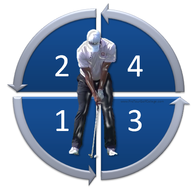 The Get Back to Simple Learning Strategy We have a very simple Eastern style learning strategy that we have used to help our students at Pro Tour Golf College to simplify their golf swing and make progress that we call the “get back to simple” strategy. If you want to learn golf more effectively with a learning strategy based more on how basic Martial Arts techniques are taught then you might want to use this strategy which essentially breaks your whole stroke down into smaller and more manageable parts or chunks. In other words your aim is to make your complicated 7 part golf swing much simpler to learn and develop by reducing it down to just 1 part. So rather than trying to break your golf swing down into a multitude of parts and then attempt to fit them back together perfectly into a better whole (Western style), you develop your swing more like they do in Martial Arts by visualizing the whole of your stroke as you want it to be and then you reduce your golf stroke down to just one or possibly two parts that you practice and continually develop with your instructor. At first this will seem difficult to do because you will feel like you need more parts in your model, so you will struggle initially to get you get your head around this new simple swing development strategy, but hang in there with it because you will quickly see the value in this simple cyclic learning strategy and how it can help you to make consistent progress with your game. 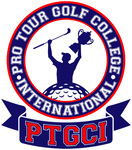 Perth and Jakarta Perth and Jakarta And you can do the same thing for any of your golf skills from putting to the full swing. Just break it down and precisely practice your movements with the goal of achieving the “no mind” level. Make your golf stroke as simple as you can by simplifying what you do, and understand that you are never trying to perfect your golf stroke--you are simply learning and developing basic movements that make your golf swing stronger and more reliable with no end in sight for finishing the work. Lawrie Montague and David Milne - Pro Tour Golf College The Professional Golf Tour Training College |
Archives
June 2019
|
Proudly Supported By
Copyright © 2011 - 2018 Pro Tour Golf College
Website Managed By Golf Performance Media
All Rights Reserved
Website Managed By Golf Performance Media
All Rights Reserved



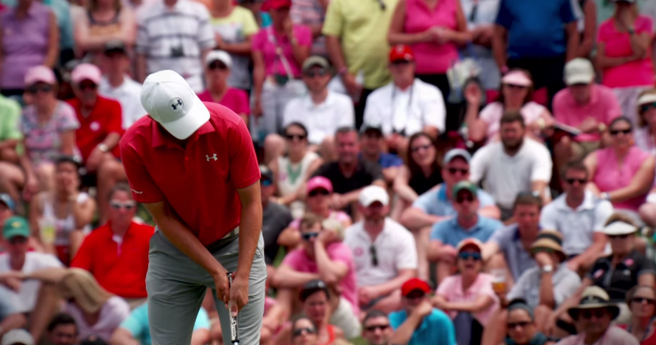


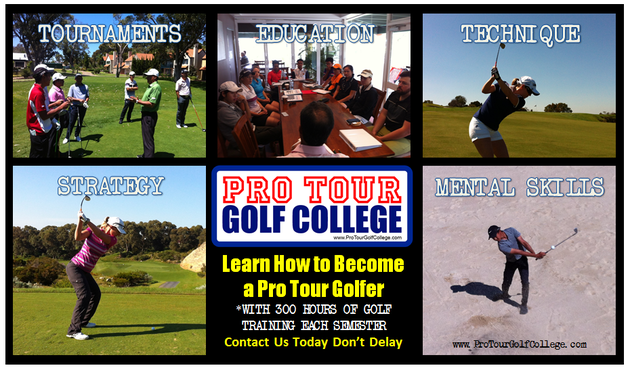

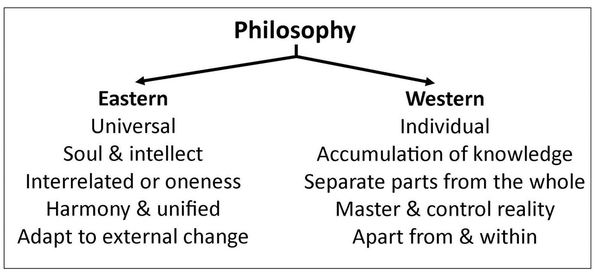



 RSS Feed
RSS Feed



